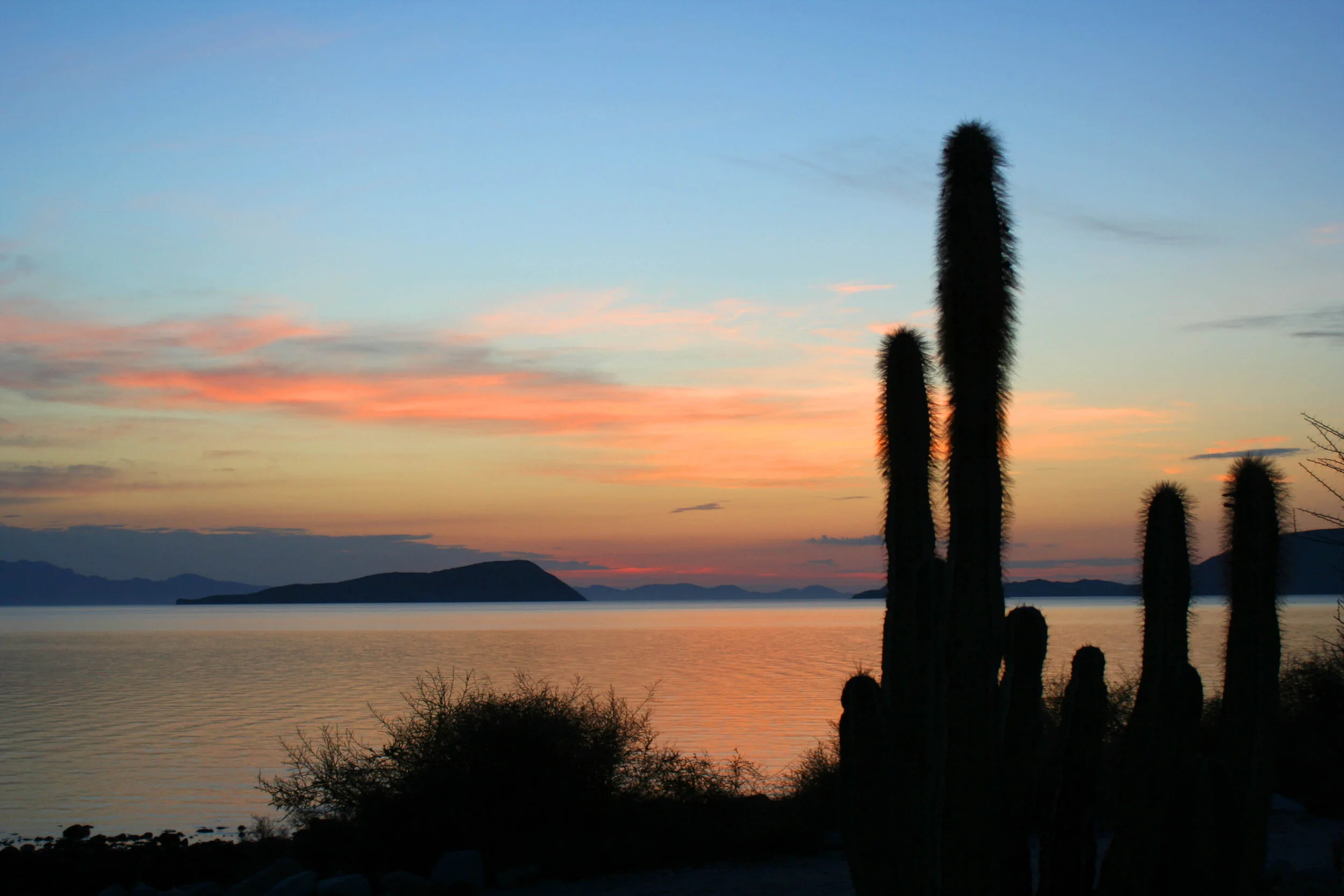To Goldman Peak
Edward William Nelson bestowed (in my mind) the ultimate honor to his respected colleague, naming a prominent peak after his friend and partner, Edward Alphonso Goldman. This peak lies just north and east of the Santa Gertrudis Mission and slightly north of the 28th parallel of latitude. Nelson described it as being near 5,000 feet of elevation.
The crew, consisting of JT, Todd, Greg, and Guy headed up one of the old mission trails (one branch of the El Camino Real) toward Goldman Peak. This trail was built during the mission times and was, in spots, well worn and well engineered. We passed many species of cacti, saw numerous species of birds, and had some amazing views of the surrounding mountains, canyons, and geology. We passed two areas where the forefathers of today's local rancheros had built stacked rock walls to keep in or out their stock.
On the return trip we somehow got separated. JT and I were in front, followed by Greg, then by Guy. JT and I arrived at the last significant geographical feature along the trail and decided to wait for the others. Greg arrived a few minutes later and we waited for Guy to arrive. After 20 minutes or so in the sweltering heat, Greg offered to stay behind and wait for Guy and suggested that JT and I head back to the mission, our vehicles, and more importantly, water!
Greg stayed back for another 15 minutes and waited for Guy before he became concerned and decided to hike back up the trail and begin a series of loud yells in an attempt to get Guy's attention. Several yells later, Greg heard a reply. Too far off in the distance to understand the meaning, he continued up the trail. Rounding a corner, Greg intercepts a local caballero (cowboy), Alonzo, who was riding a mule while out checking on his cattle.
Alonzo had not seen Guy and the two began to look for any sign of our lost amigo. They tracked footprints in an arroyo that the trail crossed and started to follow the size 10 tracks until the sand gave way to gravel. A plan was devised and they decided to split up sending Greg back up to the trail and down to the mission. Alonzo was to follow the arroyo and the two would meet up at the mission. Alonzo assured Greg that all was well as he has spent his life in these mountains, could track just about anything, and had rescued many gringos from near death.
Soon after parting, Alonzo found another footprint of Guy's and not more than a meter away was a fat, coiled rattlesnake. His worst fears began to well up inside him as he feared that our friend Guy may have also crossed paths with this desert viper. The terrain from then on was not conducive to tracking a single person wearing vibram-soled walking shoes, but Alonzo pushed onward expecting the worst of outcomes.
JT and I had been been at the mission for nearly 45 minutes when Guy strolls into the compound without a care in the world. He never saw Greg, but admitted that he heard yelling and at one point, yelled back, but could not figure out the direction or the message being yelled. The canyon walls tend to play tricks on sound when in the bottom of an arroyo.
Concern gave way to a new plan. I would hike back up to the last known location for Greg and see if I could find him to give him the word that Guy was OK. Minutes later Greg walked into the compound and clearly was relieved to see that Guy was alive and unharmed. Alonzo rode in 15 minutes later and was also relieved and proceeded to tell a story about a woman that was bit by a rattler several years earlier and needed a helicopter search and rescue to get her to safety.
We had the most lively conversation that night while sitting around the campfire. We told stories of the day, joked about what Greg would have to say to Sandy (Guy's gal) about loosing him, and about the adventure we had on the way to Goldman Peak.



















